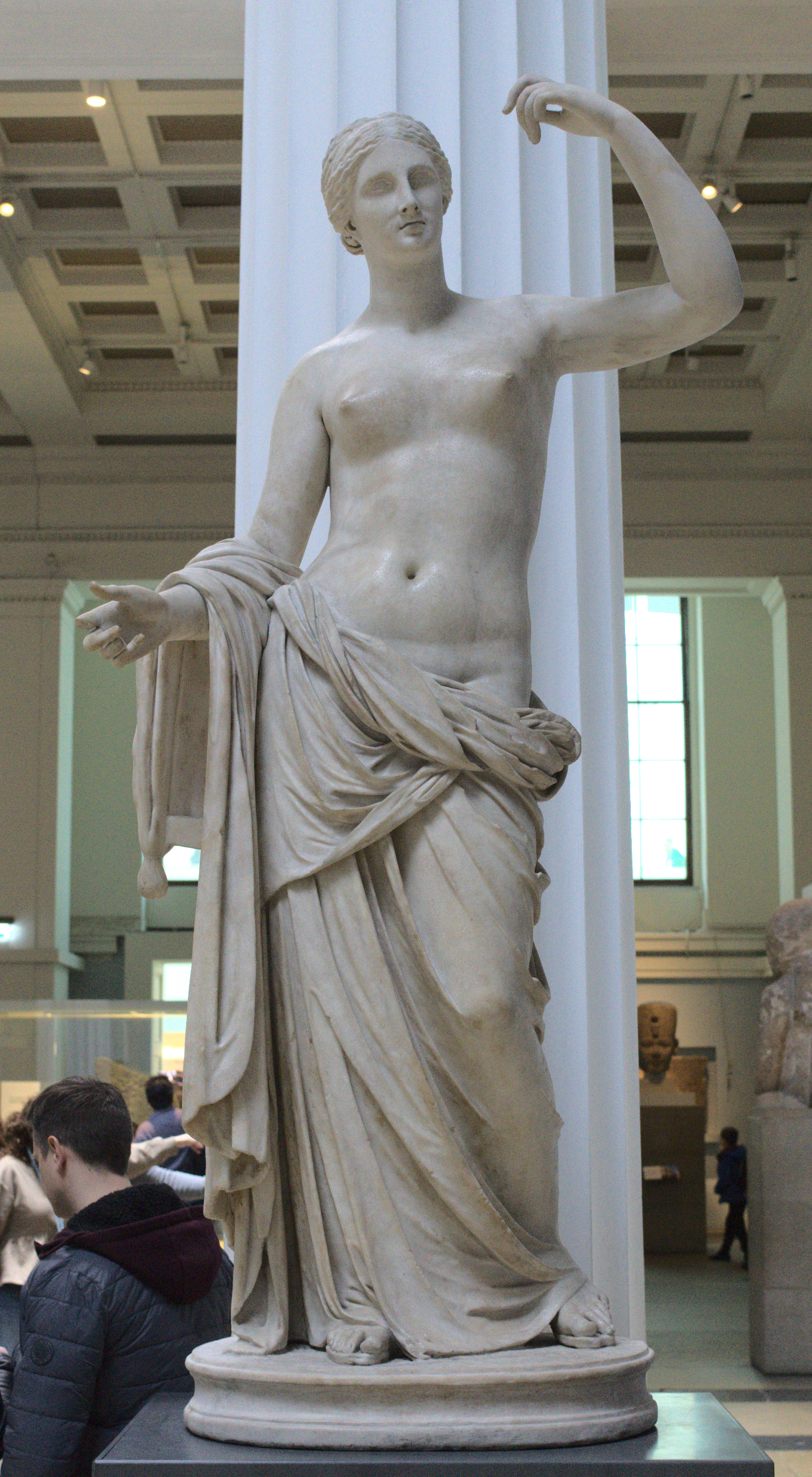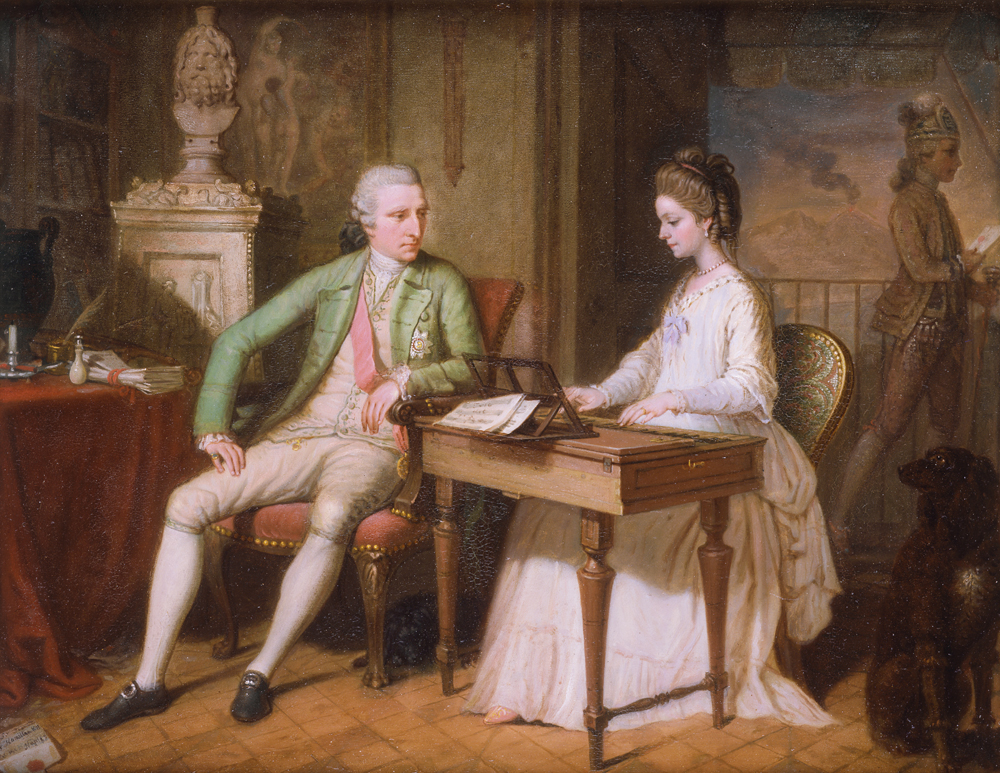|
Townley Vase
The Townley Vase is a large Roman marble vase of the 2nd century, discovered in 1773 by the Scottish antiquarian and dealer in antiquities Gavin Hamilton (artist), Gavin Hamilton in excavating a Roman villa at Monte Cagnola (Montecanino) considered to have been a villa of Antoninus Pius, between Genzano di Roma, Genzano and Civita Lavinia, near the ancient Lanuvium, in Lazio, southeast of Rome. The ovoid vase has volute handles in the manner of a pottery ''krater''. It is carved with a deep frieze in bas-relief, occupying most of the body, illustrating a Bacchanalian procession. Its name comes from the English collector Charles Towneley, Charles Townley, who purchased it from Hamilton in 1774 for £250. Townley's collection, long on display in his London house in Park Street, was bought for the British Museum after his death in 1805. In the 19th century it was often imagined that John Keats, Keats' ''Ode on a Grecian Urn'' (1819) was inspired by the Townley Vase, though modern cr ... [...More Info...] [...Related Items...] OR: [Wikipedia] [Google] [Baidu] |
Charles Towneley
Charles Townley Royal Society, FRS (1 October 1737 – 3 January 1805) was a wealthy English country gentleman, antiquary and collector, a member of the Towneley family. He travelled on three Grand Tours to Italy, buying antique sculpture, vases, coins, manuscripts and Old Master drawings and paintings. Many of the most important pieces from his collection, especially the Townley Marbles (or Towneley Marbles) are now in the British Museum's Department of Greek and Roman Antiquities. The marbles were overshadowed at the time, and still today, by the Elgin Marbles. Biography Charles Townley was born in England at Towneley Hall, the family seat, near Burnley in Lancashire, on 1 October 1737. He was the eldest son of William Towneley (1714–1741) and Cecilia, daughter and heiress of Standish family, Ralph Standish of Standish, Greater Manchester, Standish, Lancashire, and granddaughter of Henry Howard, 6th Duke of Norfolk. From a Catholic family and thus excluded both from public ... [...More Info...] [...Related Items...] OR: [Wikipedia] [Google] [Baidu] |
Archaeological Discoveries In Italy
Archaeology or archeology is the study of human activity through the recovery and analysis of material culture. The archaeological record consists of artifacts, architecture, biofacts or ecofacts, sites, and cultural landscapes. Archaeology can be considered both a social science and a branch of the humanities. It is usually considered an independent academic discipline, but may also be classified as part of anthropology (in North America – the four-field approach), history or geography. The discipline involves surveying, excavation, and eventually analysis of data collected, to learn more about the past. In broad scope, archaeology relies on cross-disciplinary research. Archaeologists study human prehistory and history, from the development of the first stone tools at Lomekwi in East Africa 3.3 million years ago up until recent decades. Archaeology is distinct from palaeontology, which is the study of fossil remains. Archaeology is particularly important for learni ... [...More Info...] [...Related Items...] OR: [Wikipedia] [Google] [Baidu] |
Hellenistic And Roman Sculptural Vases
In classical antiquity, the Hellenistic period covers the time in Greek history after Classical Greece, between the death of Alexander the Great in 323 BC and the death of Cleopatra VII in 30 BC, which was followed by the ascendancy of the Roman Empire, as signified by the Battle of Actium in 31 BC and the Roman conquest of Ptolemaic Egypt the following year, which eliminated the last major Hellenistic kingdom. Its name stems from the Ancient Greek word ''Hellas'' (, ''Hellás''), which was gradually recognized as the name for Greece, from which the modern historiographical term ''Hellenistic'' was derived. The term "Hellenistic" is to be distinguished from "Hellenic" in that the latter refers to Greece itself, while the former encompasses all the ancient territories of the period that had come under significant Greek influence, particularly the Hellenized Middle East, after the conquests of Alexander the Great. After the Macedonian conquest of the Achaemenid Empire in 330 BC ... [...More Info...] [...Related Items...] OR: [Wikipedia] [Google] [Baidu] |
Townley Collection
Townley is a surname. Notable people with the surname include: * A. C. Townley (1880–1959), American political organizer, founder the National Non-Partisan League * Alvin Townley (born 1975), American author who writes about adventure with a greater purpose * Athol Townley (1905–1963), Australian politician and Minister for Defence * Ben Townley (born 1984), professional motocross rider originating from Taupo, New Zealand * Charles Townley (1737–1805), English country gentleman, antiquary and collector of the Townley Marbles * Charles Townley (officer of arms) (1713–1774), long-serving officer of arms at the College of Arms in London * Doody Townley (born 1925), driver of standardbred racehorses in New Zealand * Fred Townley, architect who designed many buildings in Vancouver, Canada * Frederick Townley-Smith (1887–1961), Co-operative Commonwealth Federation member of the Canadian House of Commons * George Townley (1891–1977), the sixth Bishop of Hull in the modern era ... [...More Info...] [...Related Items...] OR: [Wikipedia] [Google] [Baidu] |
Townley Venus
The Townley Venus is a 2.14 m (7 ft) high 1st or 2nd century AD Roman sculpture in Proconnesian marble of the goddess Venus, from the collection of Charles Towneley. Adapted from a lost Greek original of the 4th century BC, the goddess is half-draped, with her torso nude. The arms were restored in the 18th century and the statue was set in another plinth, thereby changing the original pose and viewpoint. If the restoration is correct, her arms are in a pose reminiscent of the Venus of Capua or ''Venus de Milo'', and like them she may have held a mirror. History Townley Venus was found in the ruins of the Baths of the Emperor Claudius in Ostia by Gavin Hamilton in 1775. Hamilton was sent a letter to Townley in January 1776, informing Townley of the statue's existence. After Townley learned of the statue, the two quickly entered negotiations. The two reached an agreement in May 1777, historians are unsure whether it was sold for £600 or £700. Hamilton didn't send ... [...More Info...] [...Related Items...] OR: [Wikipedia] [Google] [Baidu] |
William Hamilton (diplomat)
Sir William Hamilton, KB, PC, FRS, FRSE (13 December 1730 – 6 April 1803) was a British diplomat, politician, antiquarian and vulcanologist who served as the Envoy Extraordinary to the Kingdom of Naples from 1764 to 1800. After sitting in the House of Commons of Great Britain from 1761 to 1764, he began working as a diplomat, succeeding Sir James Gray as the British ambassador to the Kingdom of Naples. While in Italy, Hamilton became involved in studying local volcanoes and collecting antiquities, becoming a fellow of the Royal Society and being given the Copley Medal. His second wife was Emma Hamilton, who was famed as the mistress of Horatio Nelson, 1st Viscount Nelson. Early life and career Hamilton was born on 13 December 1730 (or 12 January 1731) in either London or at Park Place, Berkshire, the fourth son of Lord Archibald Hamilton (1673–1754), Governor of Jamaica, and Lady Jane Hamilton (before 1704–1753), daughter of the 6th Earl of Abercorn (near 1661–1 ... [...More Info...] [...Related Items...] OR: [Wikipedia] [Google] [Baidu] |
Ode On A Grecian Urn
"Ode on a Grecian Urn" is a poem written by the English Romantic poet John Keats in May 1819, first published anonymously in ''Annals of the Fine Arts for 1819'' (see 1820 in poetry)''.'' The poem is one of the " Great Odes of 1819", which also include " Ode on Indolence", " Ode on Melancholy", "Ode to a Nightingale", and " Ode to Psyche". Keats found existing forms in poetry unsatisfactory for his purpose, and in this collection he presented a new development of the ode form. He was inspired to write the poem after reading two articles by English artist and writer Benjamin Haydon. Through his awareness of other writings in this field and his first-hand acquaintance with the Elgin Marbles, Keats perceived the idealism and representation of Greek virtues in classical Greek art, and his poem draws upon these insights. In five stanzas of ten lines each, the poet addresses an ancient Greek urn, describing and discoursing upon the images depicted on it. In particular he reflects ... [...More Info...] [...Related Items...] OR: [Wikipedia] [Google] [Baidu] |
John Keats
John Keats (31 October 1795 – 23 February 1821) was an English poet of the second generation of Romantic poets, along with Lord Byron and Percy Bysshe Shelley. His poems had been in publication for less than four years when he died of tuberculosis at the age of 25. They were indifferently received in his lifetime, but his fame grew rapidly after his death. By the end of the century, he was placed in the canon of English literature, strongly influencing many writers of the Pre-Raphaelite Brotherhood; the ''Encyclopædia Britannica'' of 1888 described his "Ode to a Nightingale" as "one of the final masterpieces". Keats had a style "heavily loaded with sensualities", notably in the series of odes. Typically of the Romantics, he accentuated extreme emotion through natural imagery. Today his poems and letters remain among the most popular and analysed in English literature – in particular "Ode to a Nightingale", " Ode on a Grecian Urn", " Sleep and Poetry" and the sonnet " ... [...More Info...] [...Related Items...] OR: [Wikipedia] [Google] [Baidu] |
British Museum
The British Museum is a Museum, public museum dedicated to human history, art and culture located in the Bloomsbury area of London. Its permanent collection of eight million works is the largest in the world. It documents the story of human culture from its beginnings to the present.Among the national museums in London, sculpture and decorative art, decorative and applied art are in the Victoria and Albert Museum; the British Museum houses earlier art, non-Western art, prints and drawings. The National Gallery holds the national collection of Western European art to about 1900, while art of the 20th century on is at Tate Modern. Tate Britain holds British Art from 1500 onwards. Books, manuscripts and many works on paper are in the British Library. There are significant overlaps between the coverage of the various collections. Established in 1753, the British Museum was the first public national museum. In 2023, the museum received 5,820,860 visitors, 42% more than the previous y ... [...More Info...] [...Related Items...] OR: [Wikipedia] [Google] [Baidu] |
Bacchanalia
The Bacchanalia were unofficial, privately funded popular Roman festivals of Bacchus, based on various ecstatic elements of the Greek Dionysia. They were almost certainly associated with Rome's native cult of Liber, and probably arrived in Rome itself around 200 BC. Like all mystery religions of the ancient world, very little is known of their rites. They seem to have been popular and well-organised throughout the central and southern Italian peninsula. Livy, writing some 200 years after the event, offers a scandalized and extremely colourful account of the Bacchanalia, with frenzied rites, sexually violent initiations of both sexes, all ages and all social classes; he represents the cult as a murderous instrument of conspiracy against the state. Livy claims that seven thousand cult leaders and followers were arrested, and that most were executed. Livy believed the Bacchanalia scandal to be one of several indications of Rome's inexorable moral decay. Modern scholars take a s ... [...More Info...] [...Related Items...] OR: [Wikipedia] [Google] [Baidu] |









